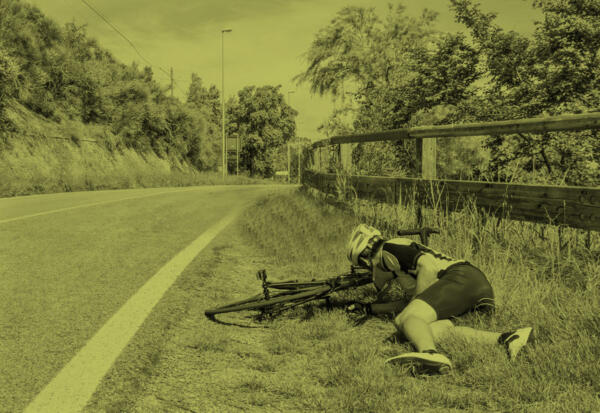
Cycling is a great way to get around but it can be painful when a negligent driver, pedestrian, cyclist or other hazard causes an accident.
Once the adrenaline wears off you may be left with aches, pain or lingering injuries that require expensive rehabilitation or time off of work.
Doing what you can to stay safe is key – every time you ride there are precautionary steps you can take to protect yourself, preserve your legal rights and be prepared should the unexpected happen.
If an accident strikes, don’t just ride away.
Even if you think you are fine, there may be unforeseen after-effects. Stay calm, be polite and gather as much information as possible, as soon as possible.
As you may not see the possible defendant again, if you are able to, remain at the scene and speak to anyone who may have information.
Ask the driver for their name and contact information and take a picture of the licence plate of any vehicle involved.
If the driver is being evasive or leaves the scene, or if you have concerns about your safety or the nature of your injuries, take down as much information as possible and call 9-1-1.
Accident scene checklist
- If the police come be sure to get a file number.
- If they require a statement from you make it brief.
- If an ambulance attends, wait for them to arrive and assess your injuries and follow the paramedics’ recommendations.
- If they suggest you go to the hospital, go. If they suggest you seek medical attention from your family doctor, make an appointment or go to a walk in clinic.
You do not need to call ICBC to report the accident immediately after it happens. You can wait and speak to a lawyer first, but don’t wait too long.
What to do next
Takes notes on as many of the circumstances surrounding the accident as you can while they are fresh in your memory and in as much detail as possible.
- What you remember seeing and doing leading up to the accident.
- The road, weather, light and traffic conditions, the time of day, the type of reflective gear you were wearing and any other details leading up to and at the time of the accident.
- The results of the accident: how did you fall (e.g. sideways, over your handlebars, onto the car, etc.), what part of your body landed first, where did your bicycle end up in relation to you and the vehicle that hit you or the hazard you encountered.
- How you are feeling and any and all injuries (any bumps, bruises, or cuts as well as any invisible symptoms like pulled or aching muscles, nausea, dizziness, anxiety and headaches)
If you haven’t already, remember to take photos of damage to your bicycle, the clothing you were wearing, and your helmet.
If any of your clothing or your helmet is damaged, hold on to them because they could be evidence. If your helmet is cracked or dented from the accident, get a new one, but keep the old one just in case it is needed later.
If you have any injuries at all, make an appointment to see your family doctor or attend a walk in clinic and consider consulting a lawyer if you have questions about a potential claim.
More News & Resources
Hammerco is proud to announce that Partner Krista Simon has been appointed a member of the Judicial Council of the Tsawwassen First Nation for a five-year term.
Billed as “enhanced care” for British Columbians by the government, BC citizens are finding out too late that ICBC’s no-fault insurance falls short of providing adequate care for those injured in car accidents.
Hammerco's Managing Partner Morgyn Chandler is included in the 2024 Canadian Legal Lexpert Directory, Canada's most comprehensive guide to legal talent.
If you share an intimate image of yourself with someone through email, a messaging app, or text, you have a right to privacy and to not have your image shared without your consent.